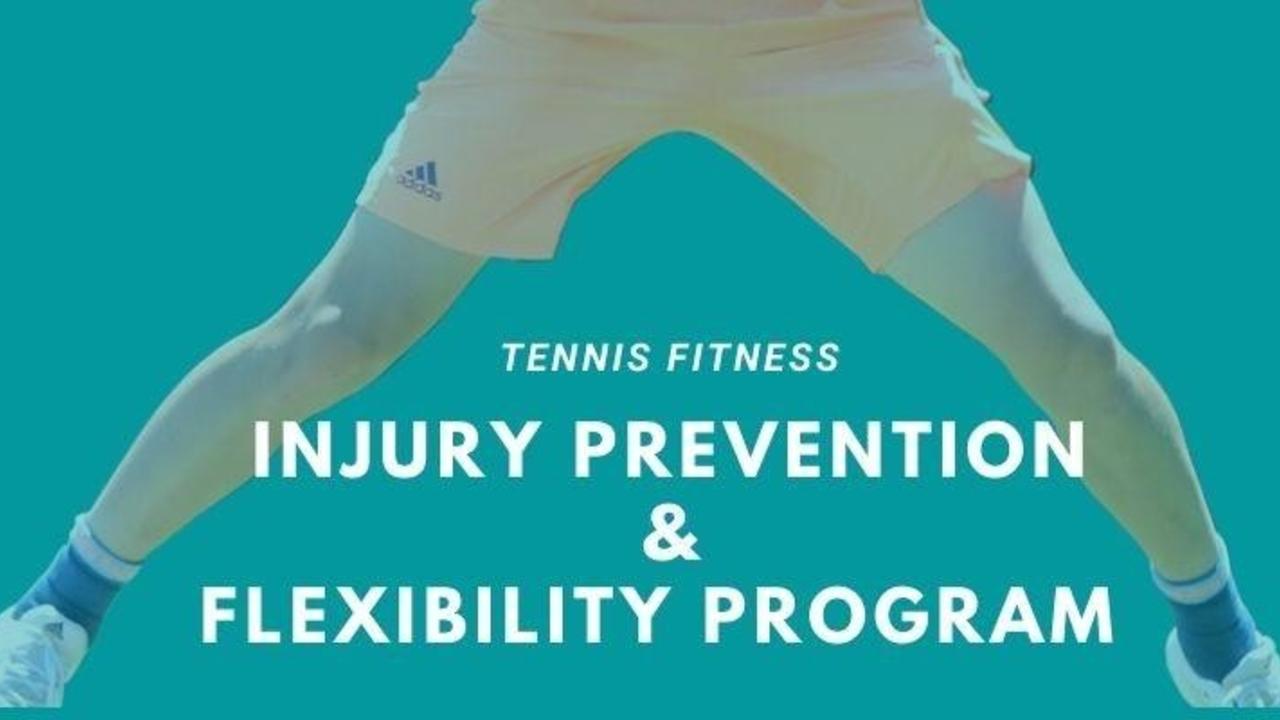Prevent Tennis Injuries With These Tennis Fitness Tests
Apr 28, 2021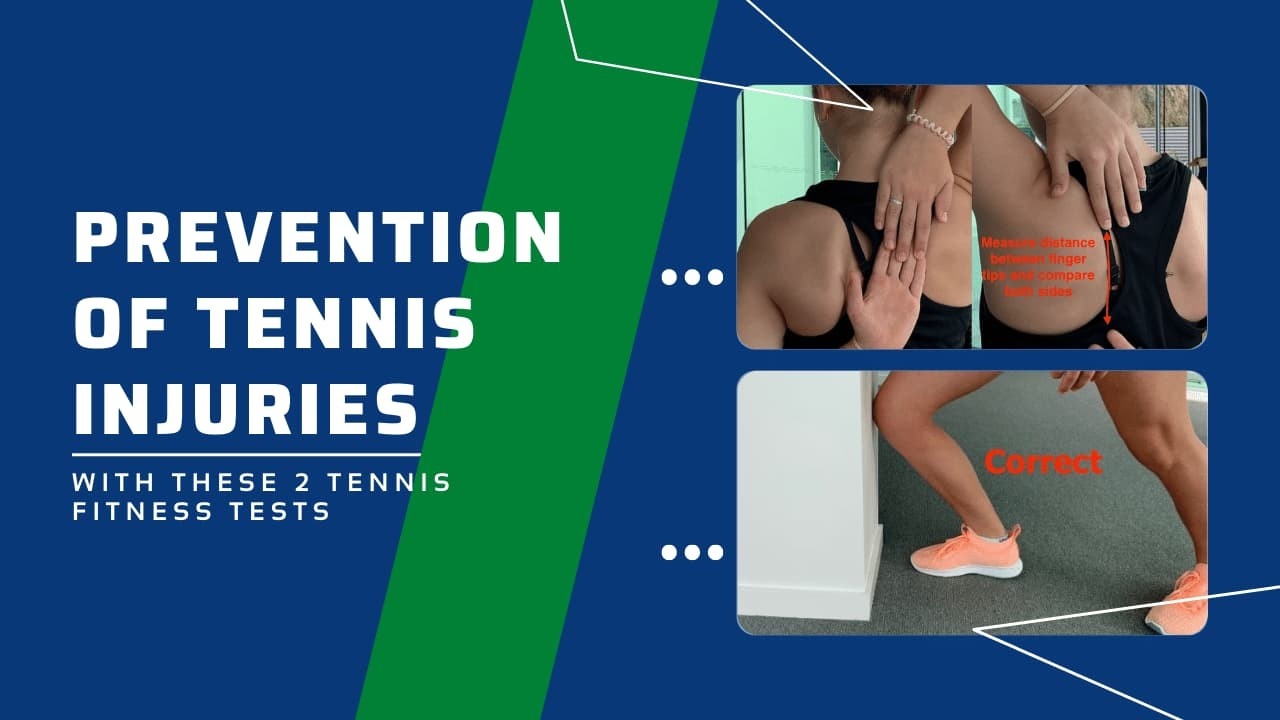
Prevent Tennis Injuries With These 2 Tennis Fitness Tests
Test 1 – Apley Test
There is a good chance if you play tennis you have had some form of a shoulder injury. The shoulder injury statistics are not great for the tennis lover. Having been a tennis fitness trainer for nearly 20 years, I would say shoulder injuries are one of the most common body parts that get messed up.
The majority of tennis shoulder injuries are overuse injuries, which generally means they can be prevented following certain preventive measures. We will look at these later on.
First, let’s look at the complexity of the shoulder joint. The shoulder joint is a ball and socket joint. It is highly mobile. It is estimated the shoulder joint can be placed in 1000s of different positions.
If you compare the shoulder joint to say the hip joint, the hip joint has a lot more structure and support around it, it is a lot more robust. On the other hand, the shoulder joint is more isolated and has a lot less muscle mass around it to support the joint.
For this reason, it needs to be well maintained (kept strong) and managed (mobile). This is how we can best prevent tennis shoulder injuries.
For a tennis player, there is no more important joint than their dominant shoulder. All shots rely on its use and having it unrestricted and strong helps more than most players realize. If you have ever had shoulder issues, you know what I am saying.
When we assess shoulder joint mobility one of the assessments we use is called the Apley test, it is the easiest to explain and implement.
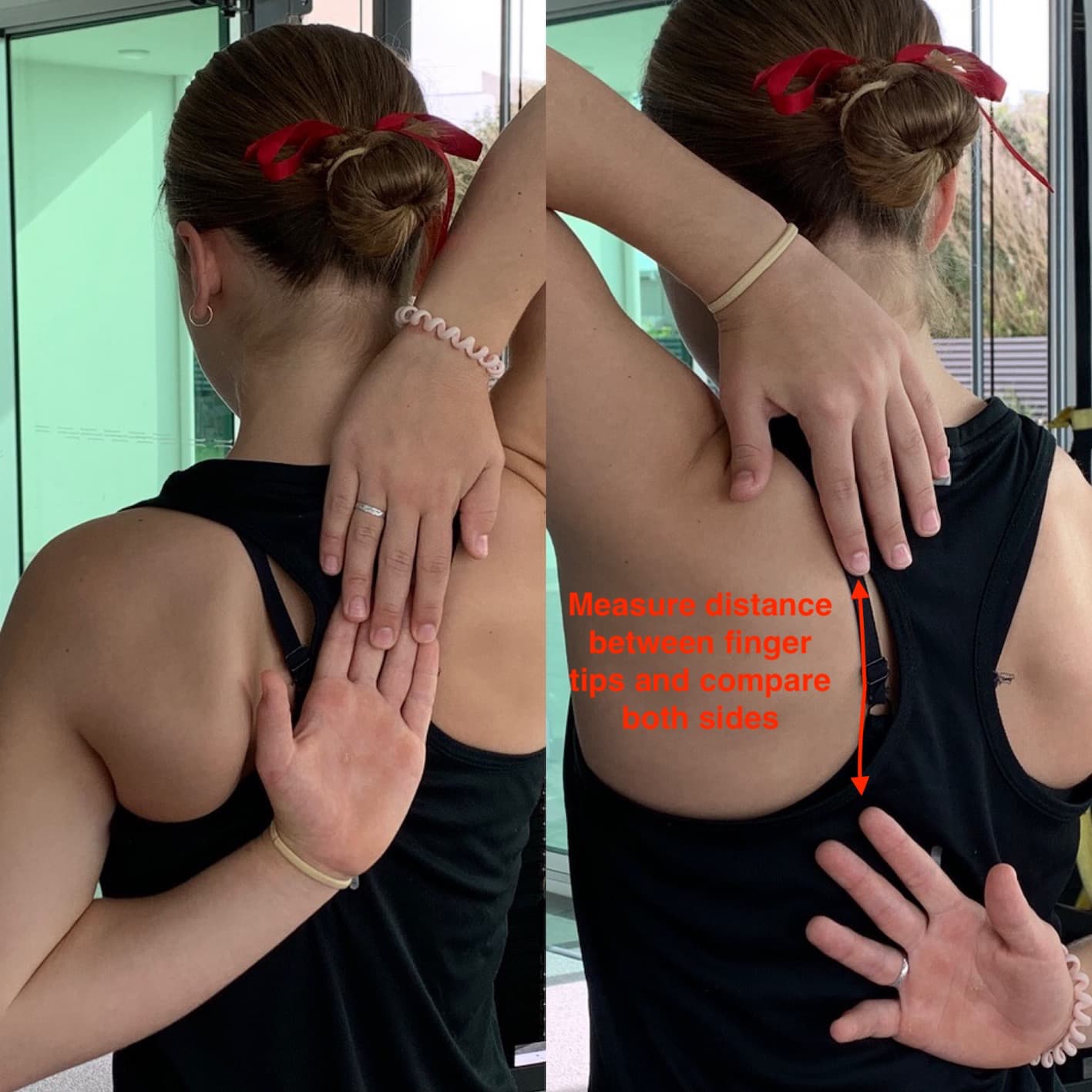
The Solution
Having a good range of motion allows the joint to move unrestricted, distributes the load better (utilizes more available muscle tissue), and places less stress on connective tissue (Tendons).
Here is an effective stretch tennis players can use for their shoulders
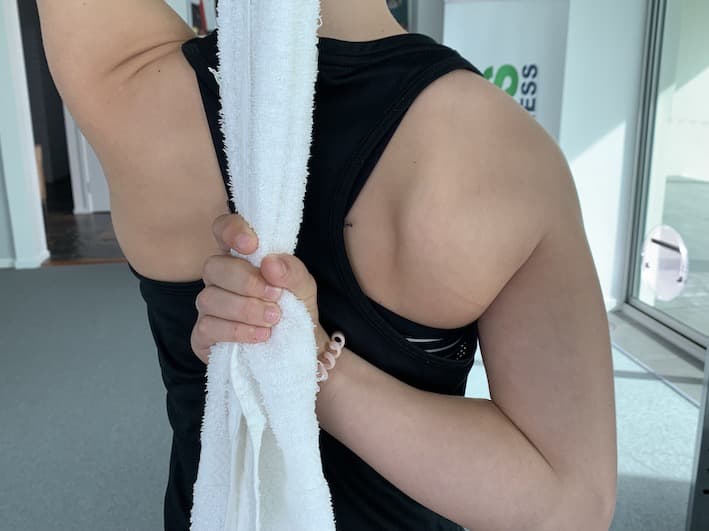
I want to highlight an issue we often see in tennis players. Being aware of this and addressing it is something that has the capacity to prevent many tennis injuries for players.
Test 2 – Knee to Wall Test
Whenever we assess a player’s tennis mobility and flexibility we always start from the ground up (big toe flexion, foot alignment, ankle joint range, calf complex flexibility, etc.).
We have found with tennis players, tend to get locked up or jammed in their ankle joints, their calf complex (plantaris, soleus, and gastrocnemius muscle), and the tibialis anterior (runs alongside your shin bone). Muscles shorten and joint mobility becomes restricted.
It is common to see players with poor ankle mobility in the leg they land on during the service motion.
To understand the importance of ankle mobility lets to take a step back and look at the body joint-by-joint. The body can be seen as an alternating stack of stable and mobile joints.
The ankle joint being the lowest to the ground, the ankle joint is a mobile joint, followed by the knee joint, which is stable, then the mobile hips then the lower back which is stable.
Limited ankle mobility will directly affect how other joints function. There is a chain reaction through tennis exercises such as running, stopping, changing direction, etc.
Lots of moving body parts and joints being manipulated and used to support the demands placed on the body. Now if ankle joints cannot move through a functional range of motion then the loads and movement have to come from somewhere else because our bodies will always find a way to “get it done” sometimes that way leads to getting injured.
This is common with most players. What can make it worse is the fact that the lack of range is usually asymmetrical, which means one side is tighter, weaker, and more restricted than the other. This leads to movement imbalances and muscle development discrepancies.
Not a good scenario when you are tearing around a court for hours a day. However….not to worry there is hope!
So, I want to share some simple ways to assess a tennis player’s ankle mobility and give you some exercises to perform to improve it (if needed).
Assessing ankle range - Knee to wall. Basically, you need to work out how far you can get your foot back from the wall, whilst your knee touches the wall and your foot stays in full contact with the ground (heel on ground).
Once established, measure the distance from the wall to the end toes (big toe). Perform on both sides and check the difference between each side. Whilst you are doing the assessment feel what is restricting the movement.
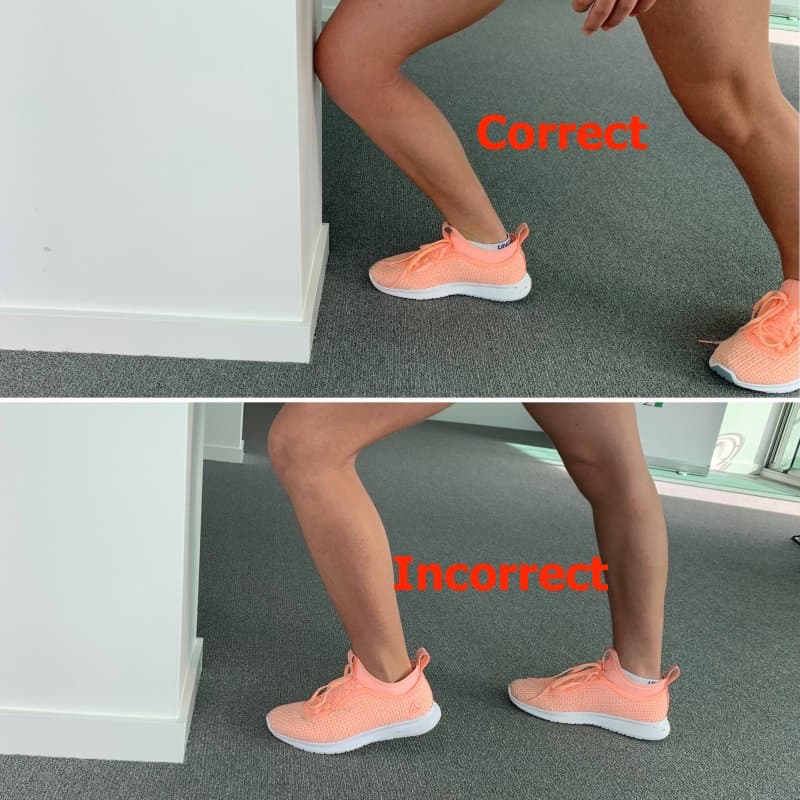
Results:
Less than 7cm = Poor mobility
Up to 12cm = Acceptable Mobility
More than 12cm = Good ankle mobility
The Solution
Here are some effective stretches and releasing exercises tennis players can use for their calfs and ankle joints.
1. Releasing tension and increasing range of motion
A - Roll calf complex
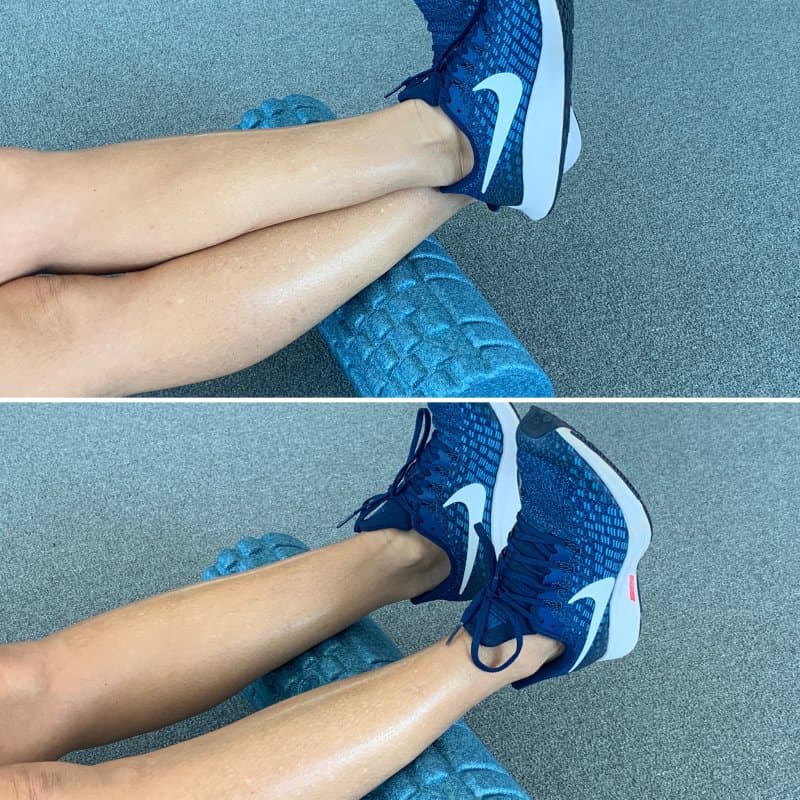
B - Stretch calf complex (straight leg and bent leg). Don’t forget to stretch using the angles (watch the video this explains it).
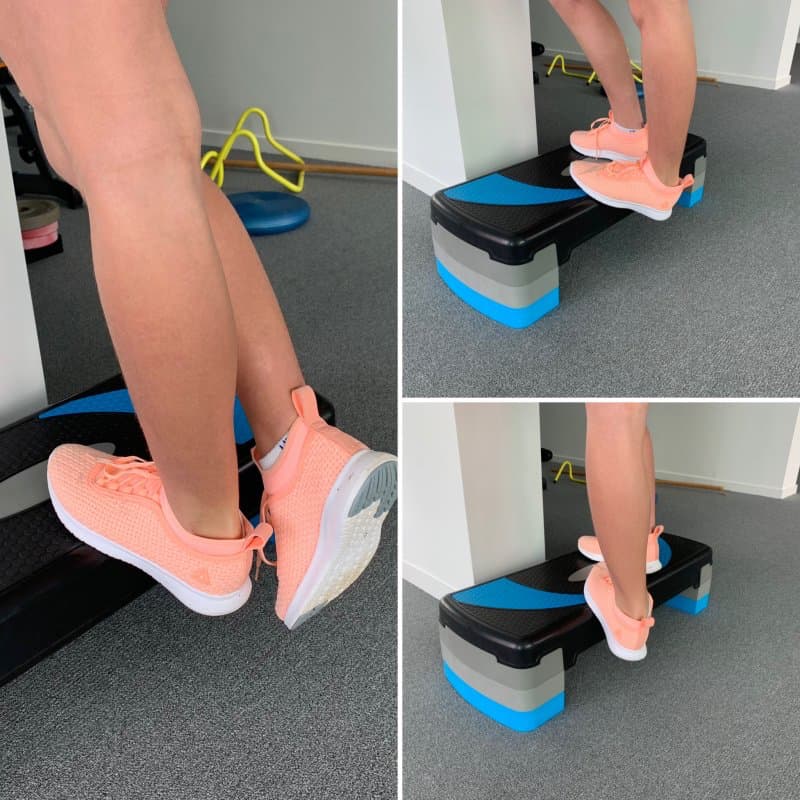
C - Mobilise the ankle joint (multi-planar). Knee to the wall and using a resistance band around the ankle joint to increase mobility.

2. Strengthen the muscles (Calf complex) – Single calf raise. Very important to strengthen the calf uni-laterally to avoid any strength imbalances.
If you have a mobility discrepancy of more than 2 centimeters between left and right ankle joints. Do an extra set of everything on the less mobile side.
Do these exercises 2-3 times weekly.
Another tip is to do the foam roller and mobility exercises before you practice or hit. You will feel a big difference in your movement, especially when performing specific tennis exercises.
Most players go through their whole careers with these issues and limit their physical potential, we do not want that to be you or anyone you work with.
If you have found this helpful please let us know, it always pleases and motivates us when we hear from you!
If you are wanting to prevent tennis injuries check out our tennis flexibility and injury prevention program here - https://www.memberstennisfitness.com/tennis-flexibility-and-injury-prevention

